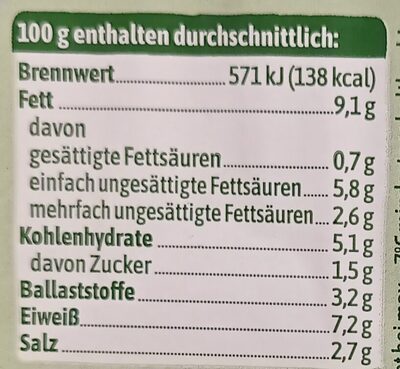Vegane Mühlen Salami bunter Pfeffer - Rügenwalder Mühle - 80 g (7 x 11,43 g)
This product page is not complete. You can help to complete it by editing it and adding more data from the photos we have, or by taking more photos using the app for Android or iPhone/iPad. Thank you!
×
Barcode: 4000405005415 (EAN / EAN-13)
Common name: Vegetarisches Erzeugnis nach Art einer Salami mit buntem Pfeffer auf Basis von Weizen, gegart
Quantity: 80 g (7 x 11,43 g)
Packaging: Plastic, Fresh, de:Green dot, de:Packung(en)
Brands: Rügenwalder Mühle
Categories: Plant-based foods and beverages, Plant-based foods, Meat alternatives, Meat analogues, Vegetarian sausages
Labels, certifications, awards:
Low or no sugar, Low sugar, Vegetarian, Vegan, European Vegetarian Union, European Vegetarian Union Vegan, Green Dot, Institut Fresenius, No flavour enhancer, No lactose


Countries where sold: Germany
Matching with your preferences
Report a problem
Data sources
Product added on by kiliweb
Last edit of product page on by cupcakedeabacate.
Product page also edited by anticultist, beniben, date-limite-app, heuwerk, moon-rabbit, openfoodfacts-contributors, packbot, raphael0202, risajanda, thecalcaholic, vactorio, worldtest.













